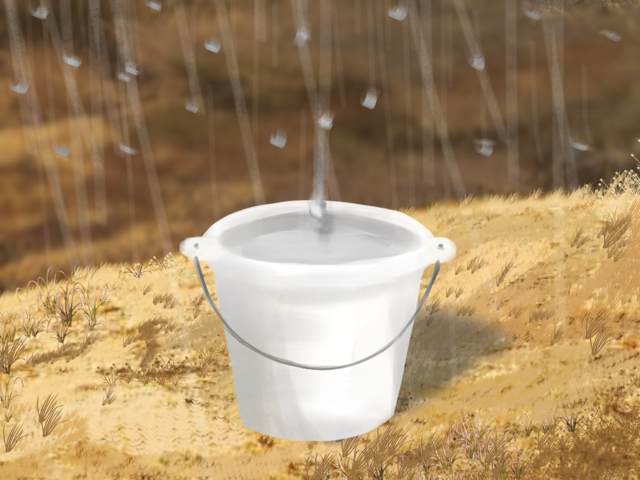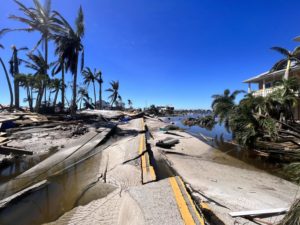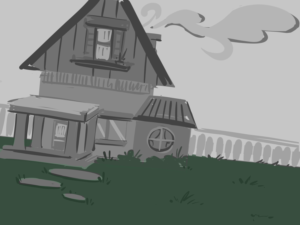The heavy rains won’t solve California’s drought
Just rain won’t be enough to fill the bucket the California drought has left empty.
January 27, 2023
Rainfall totals have been 400-600 percent above average values the past several weeks in nearly all of California, according to the National Weather Service. Locally, that has translated to San Francisco, for example, experiencing its fifth-wettest 3 week period in history in early January. It seems as if a new era of water is beginning, ending the periods of heat waves and forest fires we saw for months. On those accounts, it would make sense to say that just maybe, those few weeks were a cure, or at least an aid, for California’s notable drought.
Unfortunately, no— they’ve changed nothing. There may be more rain, but it means almost nothing in the context of the millions of acres of water still needed, and it won’t mean anything even if these rainfalls continue for a while. Just like Jeannie Jones from the California Department of Water Resources says, these rainfalls have only been a “drop in the bucket” that California’s decades-long drought has left us to fill.
That’s not to say, however, that the past few weeks haven’t made an impact. The National Oceanic and Atmospheric Administration has predicted that conditions will improve in the beginning of this year, and the National Weather Service added that we’ve already seen some California regions have one to two drought class improvements because of the rains. Reservoirs, which are crucial for collecting rainwater, have also begun to fill up, especially the ones in the Sacramento region, an area key for farming.
But multiple conditions prevent these rains and storms from being truly beneficial to the state of California’s drought. Jacob Petersen-Perlman, a water resources geography expert and assistant professor at East Carolina University, highlighted to Newsweek some of those variables, one such being the timing of the rain.
“All the rain at once means that much of it will run off into the ocean instead of filling California’s reservoirs,” Petersen-Perlman explains.
Another variable, he adds, are the snowfalls in the Sierra Nevada, as they melt into reservoirs at this time of year to contribute to river flows. 30% of our water needs are met by snowpacks in the Sierra, the rest coming from groundwater, so even if we get high levels of precipitation, the snowpacks are still crucial in determining our water resources. Despite the current good trend of snow levels, changes in weather this spring and summer through an expected heat wave would threaten these reserves.
Yet even if we get enough snowpacks and the timing is all right, the issue of groundwater is still another factor that affects the drought. Water Data Lab, a site under the USGS, finds that over the last 25 years, more than 150 kilometers-cubed of groundwater have been lost, which is equivalent to multiple years of rain. Even with rain, we still deplete more groundwater than we replenish, and the groundwater only fills up the upper zones beneath the surface.
“Our community can’t rely just on precipitation amounts or atmospheric moisture demand alone to understand how severe a drought is,” Daniella Rempe, a hydrologist at the Jackson School of Geosciences, University of Texas in Austin, stated in an interview with Newsweek.
What’s unique to our current day and age, however, is the undeniable cause of our state’s drought crisis: global warming. Rising temperatures can make droughts worse and make it less likely that wet years will come. A 2015 study found that the odds of extreme drought have doubled over the past century of warming. The chances of having these rainfalls, despite the past few heavy weeks, are rapidly decreasing, and we’re not acknowledging that fact quickly enough.
“We’re at the beginning of an era here in California where we’re realizing that we really have to do a better job of taking advantage of these wet periods,” Governor Gavin Newsom told Politico.
But ultimately, no infrastructural solution aimed at collecting rainwater will solve the root of the problem. No matter how many reservoirs we build, no matter how much rainfall we get, and no matter how much this wet period lasts, it will never be enough to solve the drought if temperatures keep rising. As more water is replenished, more water will evaporate, and as more water is collected, even more water will be used. Even if we end up filling this bucket, we’ll empty it out just as quickly. This exact attitude of believing that these rains and storms will solve the state’s issues removes our focus from one of the most important variabilities in the current and historic drought crisis.
Many of us in Dougherty Valley and this community don’t directly see the effects of the drought due to the privilege we have living in this society and the incredible amount of resources that are consistently available to us. But farmers in the Central Valley region are suffering with the lack of water as well as the sudden influx of water in the status quo, and communities in Tulare County are relying on thousands of gallons of hauled water while their wells stay parched. The drought hurts us all, no matter the showers you see outside. And there’s more to stopping the crisis than just waiting for Mother Nature to fix things.
There’s only one way we can actually address the drought we face: acknowledge that the drought still exists and will continue to do so. Failing to do so will implicate our daily lives, whether we see it through our produce, our parents’ water bills becoming increasingly higher, or the heat waves becoming more painful on our P.E. days.
The rain has been nice in some ways, there’s no doubt about that, but it also represents the painful bigger picture about California’s drought. In the end, it’s up to us, no matter where in California we live, to start caring. We can no longer just wait for nature to take care of it.






